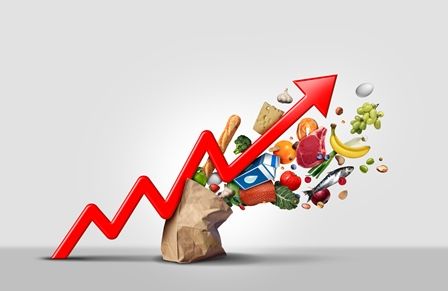
Why SA's food prices remain sticky
By Nick Wilson – News24
SA's competition watchdog still believes food is pricier than it should be – due in part to large profit margins among retailers and producers, along with a lack of competition. However, there is also some recognition that the cost of load shedding is keeping prices high, even as global food costs fall.
In the Competition Commission's latest report on essential food prices, it finds that the price of bread, maize meal and cooking oil are not cooling as fast as the sharp decline in global commodity prices.
For example, global bread and wheat prices had fallen by about 10% during the first quarter of the year, South African producer and retailer prices for bread had risen 3% during the same period.
The report found that producer prices have been falling for much of 2023. But these lower producer prices have not fully translated into lower prices in shops. This indicates that retailers are not passing through all cost reductions:
As a result, the retailers' share of retail prices reached a historically high level while the producer share has been historically low.
In an analysis of meat prices, for example, it found that weaner calf prices had fallen substantially this year, which had also led to lower prices for beef carcasses as well. However, the commission noted, the retail price for beef cuts had not declined this year. Retailers now earn 40% of the shelf price of beef, the highest share since January 2021.
The commission points out that local retailers' profit margins remain higher than in countries like the UK and Ireland.
"We notice that local retailers are much more profitable than their counterparts in these countries," the commission says in its report. "This could be due to various factors, including differences in the level of competition. Additionally, in some markets like the UK, retailer margins are decreasing as discounters gain prominence, while in South Africa, margins increased between 2019 and 2022 before a recent decline primarily attributed to load shedding costs."
Shoprite alone spent more than R1.3 billion on load shedding expenses in a year.
The weighted profit margin for South African retailers went from 5.6% in 2020 to 6.0% in 2022. It has fallen to 5.3% in 2023.
Shoprite’s profit margin grew from 2019 to 2022, but has returned to where it was in 2019. Woolworths has fallen consistently since 2020, the commission notes. Pick n Pay’s profit margin has remained stable since 2021.
But its analysis also shows that profit margins earned by bread and maize meal producers continue to grow in 2023.
The report notes that South African producers and retailers were facing other cost pressures, including load shedding, which may explain why there had been a major lag between global prices coming down and consumers seeing the benefit on supermarket shelves.
News Category
- International retailers
- On the move
- Awards and achievements
- Legislation
- Wine and liquor
- Africa
- Going green
- Supplier news
- Research tools
- Retailer trading results
- Supply chain
- Innovation and technology
- Economic factors
- Crime and security
- Store Openings
- Marketing and Promotions
- Social Responsibility
- Brand Press Office
Related Articles

Empowering South African households through gro...

SPAR shares practical tips to beat food inflation

South African motorists could be paying up to R...

Big VAT changes on the cards


